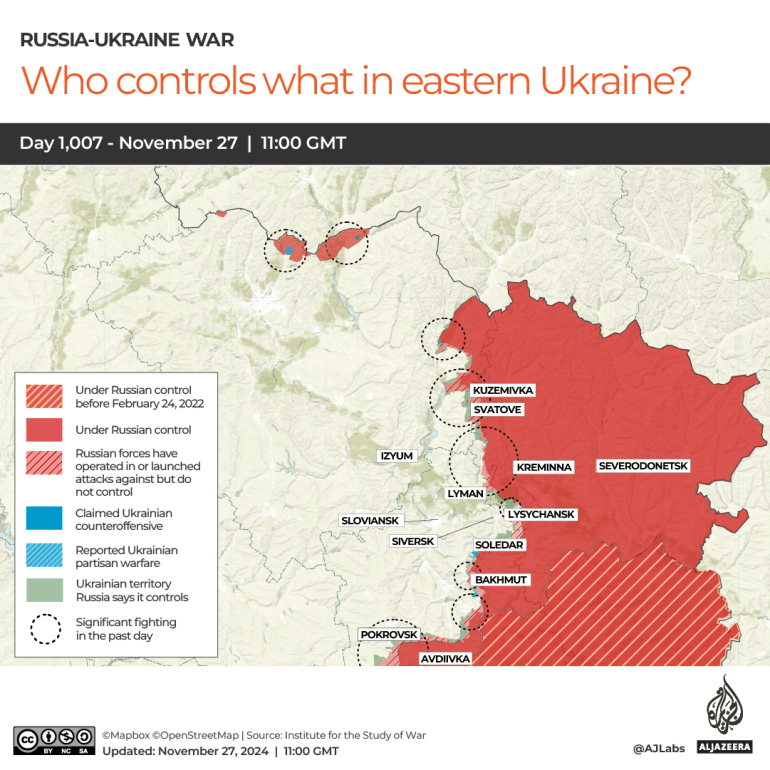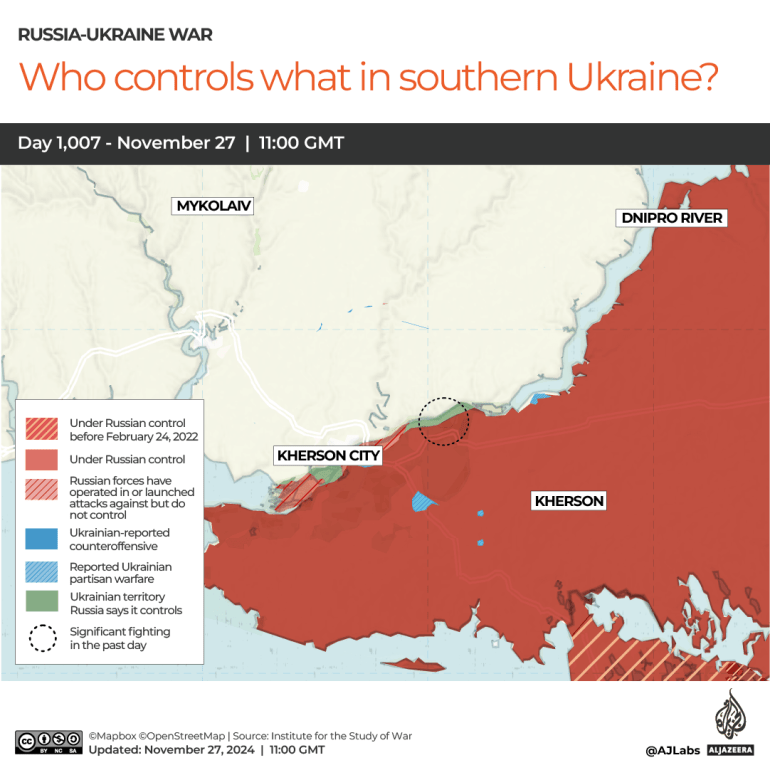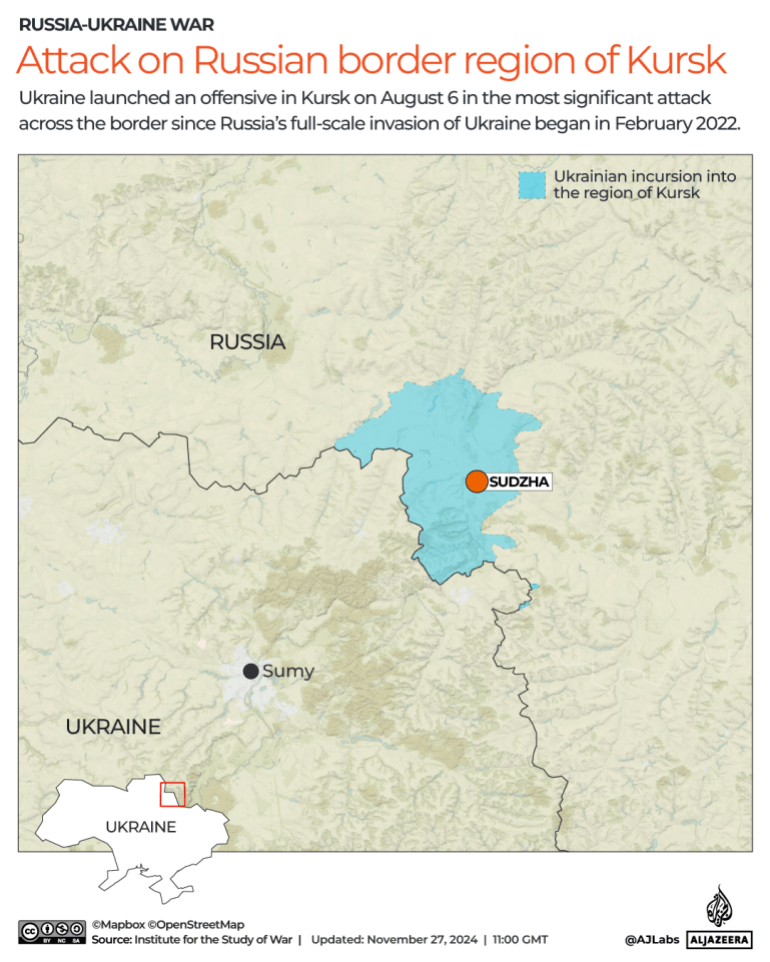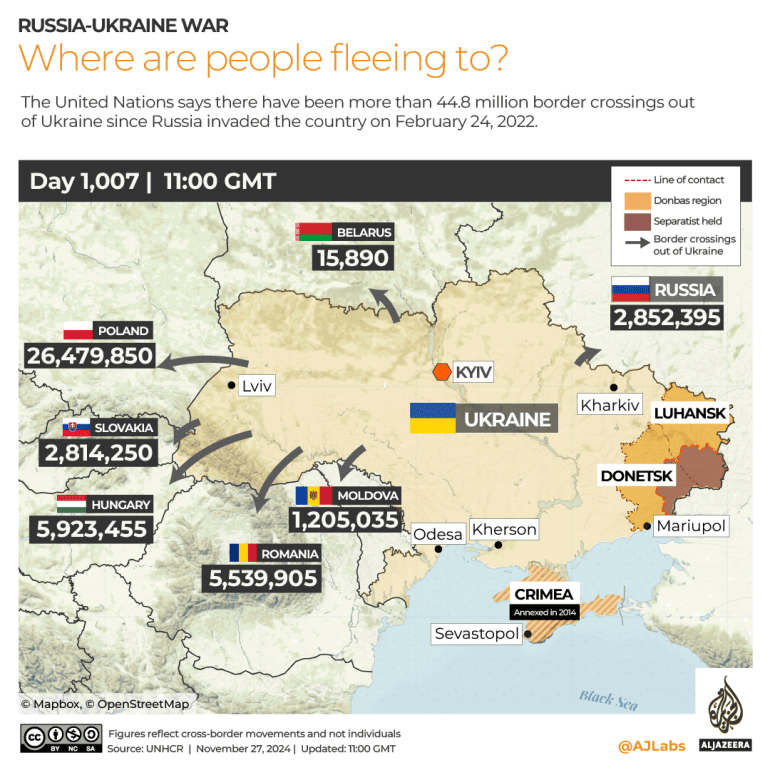The United States on Tuesday confirmed that its long-range Army Tactical Missiles (ATACMS) were being used in Russia, creating significant implications for Europe as Russia retaliated with an intermediate ballistic missile capable of reaching “anywhere in Europe.”
Amidst escalating tensions between NATO and Moscow, Russian forces continued to advance through Ukraine’s eastern Donetsk region, capturing more villages.
“Currently, they are utilizing ATACMS for immediate self-defense purposes,” stated White House national security spokesperson John Kirby. “This defense is primarily focused around Kursk and the Kursk oblast.”
In a surprising shift, the Russian Ministry of Defence also acknowledged Ukrainian ATACMS strikes, a departure from their typical response of attributing damages to falling debris from destroyed incoming missiles.
Russia’s Defence Ministry announced that ATACMS had hit an S-400 air defense radar at Lotarevka and the Khalino airfield, both located approximately 90km from Ukrainian front-line positions in Kursk. Geolocated footage supported these claims.
The acknowledgment by Russia was in response to President Vladimir Putin’s vow to retaliate against the use of ATACMS or similar long-range weapons. Ukraine had been authorized by Britain and France to launch SCALP/Storm Shadow missiles into Russia.
Last Thursday, Russia fired the Oreshnik intermediate-range ballistic missile at Dnipro in retaliation for the earlier ATACMS and Storm Shadow strikes. The missile, carrying six warheads, targeted a missile and aerospace factory but caused minimal damage, as reported by Ukrainian officials.

Putin, in a televised address following the Oreshnik strike, issued a warning to European countries allowing their weapons to be used against Russia. He highlighted the destructive power of the Oreshnik and its ability to strike targets across Europe.
Commander Sergei Viktorovich of Russia’s Strategic Missile Forces emphasized the potency of the Oreshnik and its potential impact when used collectively with other precision long-range systems in Russia’s arsenal.
Putin hinted at the missile’s capability to cause nuclear-like effects when deployed en masse.
Addressing concerns about Russia’s missile production capacity, Putin assured the presence of a reserve of such systems ready for use. Vasily Petrovich, first deputy chairman of the Military Industrial Commission, underscored Russia’s ability to mass-produce the Oreshnik through the use of indigenous technologies.

However, non-Russian observers expressed doubts regarding Russia’s mass-production capabilities. Kyrylo Budanov, head of Ukrainian intelligence, labeled the missile as experimental, indicating that only a few prototypes had been constructed.
The missile, codenamed Kedr, was part of a research program named Oreshnik. Observers questioned whether the Kedr represented novel Russian technology, as claimed by Putin.
The Pentagon and weapons analysts suggested the Kedr was based on the RS-26 Rubezh intercontinental ballistic missile, indicating a lengthy development period.
Putin highlighted the Kedr’s warheads’ high-speed capabilities, rendering interception practically impossible. The Kedr, along with other ballistic weapons, was deployed in Ukraine, presenting challenges for interception due to their rapid terminal speeds.

Both Ukraine and Russia engaged in conventional aerial attacks, with Ukraine targeting a Russian oil depot in the Kaluga region, and Russia launching numerous drones and missiles into Ukraine, including Iskander ballistic missiles and drones.
Russian forces intensified their advance in Donetsk, disrupting Kyiv’s military campaign for 2025.
Seizing villages north of Vuhledar, Russian forces leveraged Starlink satellite communication terminals to enhance their counterbattery capabilities. The expansion in territory gained by Russian forces in recent months exceeded the combined gains of the previous two years.





